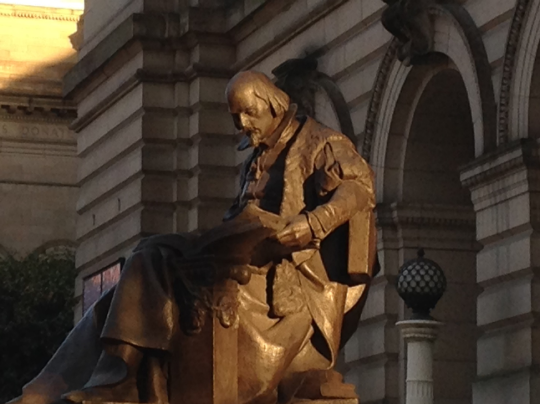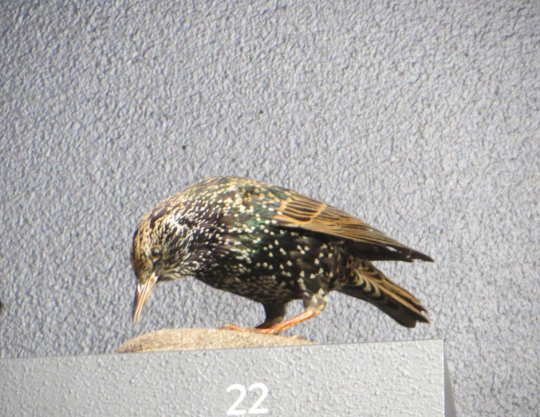By Pat McShea

Visitors to We Are Nature are challenged to make connections between short-sighted human actions and a range of persistent wide-ranging negative impacts.
If the displays profiling the unintended consequences of such practices create interest in an example with literary connections, the William Shakespeare statue outside the museum building and a Common Starling taxidermy mount within the exhibit provide requisite props.

The Common Starling, also known as the European Starling, is number 22 in a wall-mounted array of 33 creatures whose assemblage celebrates the diversity of wildlife found in Pittsburgh.
Unlike most of its display neighbors, however, the starling is not native to North America. The species was deliberately introduced to the continent, beginning in New York City’s Central Park, during the 1890s through the efforts of the American Acclimatization Society. Members of this group attempted to introduce every bird mentioned, more than two centuries earlier, in the works of William Shakespeare. The starling was their only “success.”
The species’ population in territory ranging from Alaska to Mexico is now measured in hundreds of millions, and starlings, which frequently congregate in enormous flocks, are considered agricultural pests and airport navigation hazards.
Ironically, although Shakespeare’s works frequently mention nightingales and several other bird species, starlings are only mentioned once, in the play Henry IV Part I.
Patrick McShea works in the Education and Visitor Experience department of Carnegie Museum of Natural History. Museum employees are encouraged to blog about their unique experiences and knowledge gained from working at the museum.
